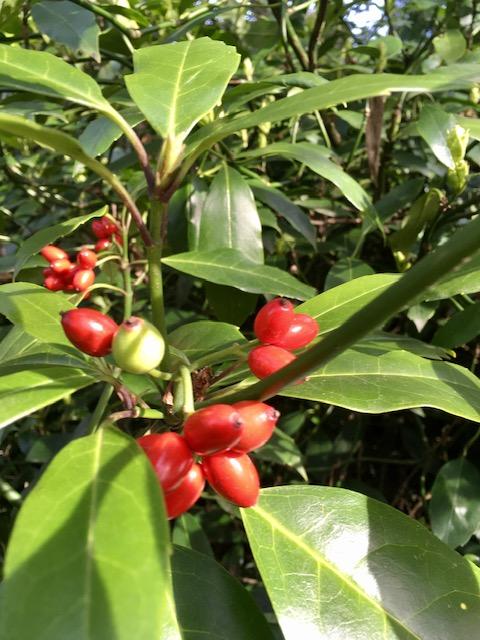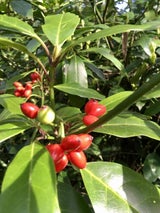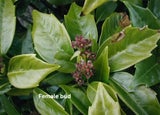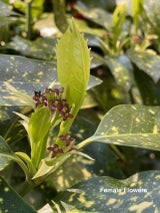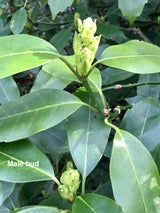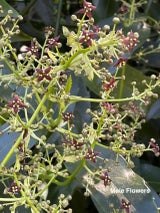- Plant IDs
- >
- ID By Type
- >
- Shrubs
- >
- Aucuba japonica
Aucuba japonica
Common name: Spotted laurel, Japanese laurel, acuba
Aucuba japonica is native to Asia and can have either plain or spotted foliage. The spots are caused by a virus. It is an evergreen shrub and grows 2-3 m, (6-10 ft.) tall. It forms red drupes, and the flowers are very tiny. Aucuba is dioecious; you need both a male and a female plant for drupes to form. The male flowers lift away from the plant in panicles; the female flowers are buried in the leaf axils (see photos).
It thrives in dry shade and can be found along the eastern fence of the Garden. We have several cultivars: 'Alba-Beulca', 'Crotonifolia', 'Gold Dust', 'f. longifolia 'Salicifolia', 'Nana Rotundifolia', 'Picturata', 'Roxannie', 'Sulphurea' and 'Variegata'.
The genus name comes from the Japanese word 'aoki' meaning 'blue,' which refers to the bluish shade of the leaves.
Female flower bud photo by Sten Porse https://commons.wikimedia.org
Other photos by Hughie Jones
